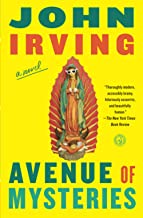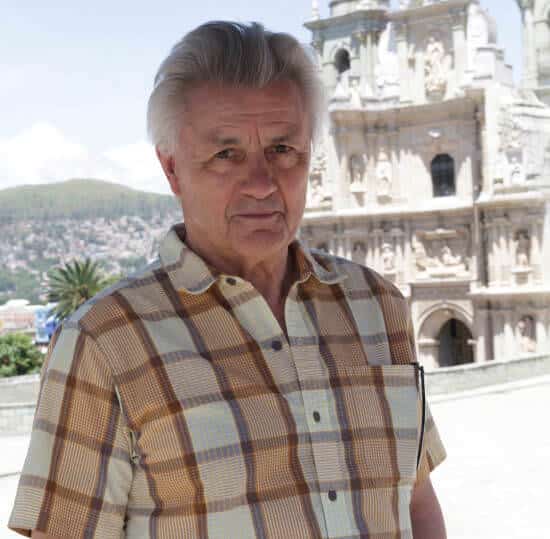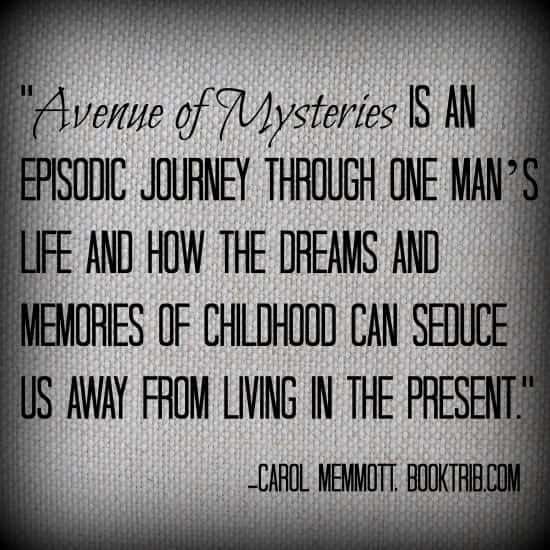Avenue of Mysteries by John Irving
 Here’s an interesting fact about John Irving whose new novel, Avenue of Mysteries (Simon & Schuster; November 2, 2015) uses the present as a vehicle for visiting the past: he begins every novel by writing the last sentence first. If your curiosity gets the better of you, then go ahead and read Avenue’s final words first. It only will entice you to flip back to the novel’s opening pages where you’ll begin a journey through the fantastical moments in Juan Diego Guerrero’s life.
Here’s an interesting fact about John Irving whose new novel, Avenue of Mysteries (Simon & Schuster; November 2, 2015) uses the present as a vehicle for visiting the past: he begins every novel by writing the last sentence first. If your curiosity gets the better of you, then go ahead and read Avenue’s final words first. It only will entice you to flip back to the novel’s opening pages where you’ll begin a journey through the fantastical moments in Juan Diego Guerrero’s life.
Like the protagonists in other Irving novels, Juan Diego is quirky and unique. Much of the story of Juan Diego’s childhood takes place in the early 1970s when he’s a teen. He and his younger sister Lupe are “dump kids” in Oaxaca, Mexico. They are scavengers who make their living sorting through trash. But Juan Diego and Lupe are not your typical dump kids. Juan Diego has taught himself to read using the books he unearths from the garbage piles. Lupe, one source of this novel’s magic realism, can read people’s minds and speaks an incomprehensible babble that only Juan Diego can understand.
Juan Diego and Lupe are perfectly happy living at the dump until “el jefe,” the man known as the dump boss, accidentally backs his truck over Juan Diego’s right foot, permanently disabling him. The local Jesuits convince Juan Diego and Lupe to move to a nearby orphanage, the next step forward on the tumultuous road toward the future.
The siblings’ lives are enmeshed in motifs that Irving employs in many of his works. Those familiar with his novels will enjoy re-visiting them and new fans can watch for these tropes: Juan Diego and Lupe will join a circus; there are countless dogs in the novel (with wonderful names including Diablo and Dirty White); there are lots of sex scenes (many of them are laugh-out-loud funny), and hot-button issues including abortion and homosexuality are astutely referenced. And when we meet the grown-up Juan Diego we learn he is a celebrated novelist, just like Irving.
The novel’s timeline toggles between the present and the past and shifts deftly between real time and Juan Diego’s dreams and memories. In the present, Juan Diego, now in his 50s, is on a journey to the Philippines to visit the military cemetery in Manila where a deceased friend’s father is buried. But most of his travel time is spent sleeping and dreaming. And all those dreams are spent in his childhood, mostly with Lupe.
In Avenue of Mysteries, Irving’s writing is whimsically robust. This novel, his 14th, may not be his masterpiece – that honor is often bestowed on A Prayer for Owen Meany – but it is burnished with cinematic moments that reflect Irving’s unfailing exuberance for telling a great story. Among these scenes are the death of Juan Diego’s mother Esperanza who appears to die at the hands of a statue known as “Mary Monster;” the colorful procession of desperate souls along the Avenida de los Mysterios that leads to the shrine of Our Lady of Guadalupe in Mexico City; and the colorful day-to-day life of the people and animals of “Circus of The Wonder.”
Especially poignant is a scene in which the adult Juan Diego stands up to a former schoolmate who he overhears bullying his teenaged daughter. Juan Diego had also been bullied by the man when they were high school classmates, mainly because Juan Diego’s adoptive parents, one of whom was transgender, were gay.
Juan Diego tells the girl and her family the tragic story of how his parents died of AIDS. It’s a heart-breaking set piece that leaves the daughter weeping. Their deaths devastated Juan Diego and their passing, he says, was made even more painful because of her father’s bullying. “The one who wanted to be a woman,” Juan Diego recalls, “I had to shave her when she was dying, because she couldn’t take the estrogens and her beard grew back, and I could tell she was sad about how much she looked like a man.”
And then there are Juan Diego’s relationships – sexual and otherwise – with a mother and daughter he meets during his travels. Are Dorothy and Miriam real, or is he imagining them? Are they what one acquaintance of Juan Diego’s calls succubi – seductive demons who take the female form – or are they hallucinations brought on by the prescription beta blockers he’s misusing?
Avenue of Mysteries is so much more than a tale about a trip to the Philippines. It’s an episodic journey through one man’s life and how the dreams and memories of childhood can seduce us away from living in the present. Repeating a theme employed in many of his works, Irving, in this delightful novel, prompts us to ruminate on the past, its impact on the present and how the events of our youth reverberate into the future.







